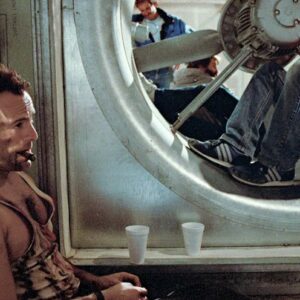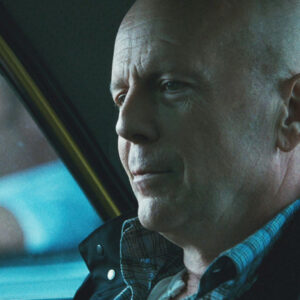Introduction
In the ever-evolving world of cinema, few collaborations stand out as emblematic of the union between artistry and activism. Cillian Murphy, one of the most versatile and compelling actors of his generation, and Ken Loach, a masterful filmmaker with an unflinching commitment to social realism, form such a partnership. Both artists have made their mark on the film industry not only through their immense talent but also through their shared belief that film can be a tool for social change. While their individual careers have taken distinct paths, Murphy and Loach’s collaboration is a powerful reflection of how cinema can address the most pressing issues of our time, from class struggles to historical injustices.
Their professional relationship, which began with the 2006 film The Wind That Shakes the Barley, is a testament to the bond formed by mutual respect and shared values. The two have since maintained a professional rapport rooted in a commitment to the underrepresented, a belief in authenticity, and an unwavering dedication to the marginalized voices of society.
Cillian Murphy: A Versatile Actor with a Social Conscience
Cillian Murphy is best known for his work in high-profile blockbusters such as Inception (2010) and The Dark Knight Trilogy (2005-2012), where he played characters ranging from the enigmatic villain Scarecrow to the dream-weaving architect of Inception. Yet it is his portrayal of complex, often troubled characters in smaller, socially conscious films that truly showcases the breadth of his acting range. Over the years, Murphy has built a reputation for being both commercially successful and artistically ambitious. He has consistently chosen roles that push the boundaries of conventional cinema, often aligning himself with directors who share his commitment to meaningful storytelling.
While Murphy is no stranger to the world of high-budget franchises, his true passion lies in working with filmmakers who explore darker, more intimate aspects of human existence. He is drawn to characters that challenge societal norms and address human rights issues. This drive towards social relevance is apparent in films like The Wind That Shakes the Barley, The Dark Knight, Dunkirk (2017), and The Party (2017), where his performances often explore themes of personal sacrifice, resilience in the face of oppression, and the moral dilemmas faced by individuals caught in the web of history.
Murphy’s career choices reflect a deep commitment to humanistic storytelling. Like Ken Loach, he has an affinity for roles that bring to light the personal struggles of individuals living on the margins. Murphy’s portrayal of Damien, a young Irish revolutionary in The Wind That Shakes the Barley, exemplifies his ability to embody complex, socially conscious characters. His characters are never just victims or heroes; they are multifaceted human beings grappling with societal forces beyond their control, and Murphy brings these characters to life with an intensity and vulnerability that makes them unforgettable.
Ken Loach: A Director with a Powerful Social Vision
Ken Loach’s filmmaking career spans more than five decades, with a reputation built on a fearless exploration of working-class struggles and political injustice. Loach’s films are known for their sharp social commentary, often focusing on marginalized communities and their efforts to resist oppressive systems. His commitment to social realism is unwavering; he uses the camera as a tool to capture the raw, unvarnished truth of human experience, particularly the lives of those often excluded from mainstream cinema.
Loach’s career is defined by his exploration of the lives of ordinary people caught up in extraordinary circumstances. His films rarely romanticize their subjects, instead opting for a more grounded, documentary-like approach to storytelling. Whether it’s the Irish War of Independence in The Wind That Shakes the Barley (2006), the struggles of the British working class in I, Daniel Blake (2016), or the depiction of labor strikes in Kes (1969), Loach’s films consistently highlight the systemic issues that perpetuate poverty, inequality, and injustice.
One of Loach’s greatest strengths as a director is his ability to create intimate, empathetic portrayals of people facing social and economic hardship. He does not shy away from depicting the brutality of these struggles, but his films are never without hope. Instead, Loach’s characters often find strength in solidarity and resistance, demonstrating the power of collective action against societal forces.
Loach’s ability to humanize the political struggle has made him a key figure in socially conscious cinema. His work is never just about telling a story; it’s about sparking dialogue, challenging viewers to confront the uncomfortable truths of the world around them.
Their Collaborative Projects: A Match Made in Socially Aware Cinema
The intersection of Murphy and Loach’s careers began with their collaboration on The Wind That Shakes the Barley (2006). Loach’s film, set during the Irish War of Independence, was a bold and impassioned look at the violence, betrayal, and ideological conflicts that tore apart families and communities in early 20th-century Ireland. Murphy, in the role of Damien, a young doctor turned revolutionary, delivered a performance of extraordinary emotional depth. His portrayal of a man torn between his ideals and the brutal realities of war was a defining moment in his career.
For Loach, The Wind That Shakes the Barley was a continuation of his long-standing focus on historical struggles for freedom and justice. Murphy’s nuanced portrayal of Damien, a character caught between personal sacrifice and political loyalty, was a perfect fit for Loach’s vision of social realism. The film explored themes of nationalism, loyalty, and the cost of revolution, with Murphy bringing an understated but intense emotional weight to his role. The partnership between Loach and Murphy was marked by a shared understanding of how cinema can illuminate the lives of ordinary people caught up in extraordinary historical circumstances.
For Murphy, The Wind That Shakes the Barley was not just another historical drama—it was an opportunity to engage with a political narrative that resonated deeply with his own commitment to social justice. The film gave him the chance to portray a character whose ideals were tested by the harsh realities of war, a theme that has remained central to many of his later roles. The experience of working with Loach on such a deeply political and emotional film also marked a pivotal moment in Murphy’s career, cementing his desire to continue working with filmmakers who shared his values.
Shared Values in Filmmaking: A Commitment to Social Justice and Realism
Both Murphy and Loach are driven by a belief in the power of cinema to challenge societal norms and spark change. At the heart of their collaboration is a shared commitment to addressing social and political issues, from class inequality to historical oppression. Their films are not merely entertainment; they are a call to action, a means to engage audiences in the pressing issues of the day.
For Loach, the political aspect of filmmaking is inseparable from the artistic process. His films often explore the power dynamics between the working class and the elites, the consequences of economic inequality, and the social costs of conflict. His style is characterized by a documentary-like realism, with long takes, minimal staging, and naturalistic performances that emphasize the authenticity of the characters and situations. Loach’s commitment to truth-telling is evident in the way he captures the pain, struggle, and resilience of the people at the heart of his films.
Murphy, too, shares this sense of social responsibility in his work. While he is often associated with blockbuster films, his choice of roles in socially conscious films like The Wind That Shakes the Barley demonstrates his commitment to addressing the world’s injustices. He is particularly drawn to characters who are caught between personal conscience and societal demands, a theme that echoes Loach’s focus on the internal struggles of individuals facing systemic oppression. Both artists believe that cinema can serve as a powerful tool for raising awareness and effecting change, using storytelling to challenge the status quo.
Beyond the Set: How Their Relationship Has Evolved
Although Murphy and Loach have not collaborated extensively in recent years, their professional relationship remains a testament to the enduring power of shared artistic values. Both continue to work on projects that address social issues, with Loach continuing to direct films that highlight the struggles of the working class, while Murphy remains a sought-after actor for roles that challenge societal norms.
Their continued bond is rooted in mutual respect for their respective crafts. Loach has praised Murphy for his ability to bring complexity and depth to his roles, while Murphy has spoken about his admiration for Loach’s unflinching commitment to realism and social justice in his work. This mutual respect extends beyond the professional sphere, with both acknowledging the importance of their shared commitment to social change through film.
Conclusion
The collaboration between Cillian Murphy and Ken Loach represents more than just a partnership between an actor and a director—it is a convergence of artistic vision and social conscience. Together, they have created some of the most thought-provoking and impactful films of the 21st century, with The Wind That Shakes the Barley standing as a powerful testament to their shared commitment to addressing the injustices of the world.
In a time when the power of cinema to affect change is often questioned, the work of Murphy and Loach remains as relevant as ever. Their films challenge audiences to look beyond the surface and confront the complexities of human experience, using the medium of film not just to entertain, but to educate, provoke, and inspire action. Their professional relationship is a shining example of how art, when guided by a clear sense of purpose, can transcend entertainment and become a force for social change.





